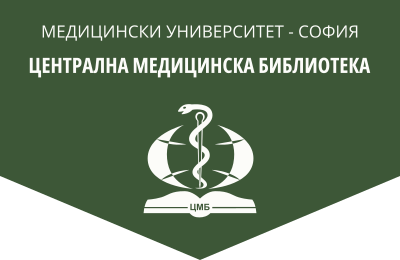A rare case of toxic epidermal necrolysis in a female patient with drug dependence and associated COVID-19 infection
General Medicine, 2023, 25(6), 32-37.
Sv. Dermendzhiev1,2,3,4, M. Maznev1,2, St. Tufkova2, M. Dimitrova2, V. Nizamova2, Vl. Bozhilov2, G. Kavlakov5, E. Dimitrova6
1 Section of Occupational Diseases and Toxicology, Second Department of Internal Medicine, Faculty of Medicine, Medical University – Plovdiv
2 Clinic of Clinical Toxicology, University Hospital “Sv. Georgi” – Plovdiv
3 Department of Occupational Diseases with activity in Clinical Allergology, University Hospital “Sv. Georgi” – Plovdiv
4 Department of “Internal Diseases, Pharmacology, Pediatrics, Social Medicine, Disaster Medicine, Computer Technologies, Infectious Diseases, Physiotherapy and Rehabilitation, Epidemiology and Tropical Diseases”, Faculty of Medicine, University “Prof. Dr. Asen Zlatarov” ‒ Burgas
5 Medical College, Medical University – Plovdiv
6 Department of Mathematics, Physics and Information Technologies, University of Food Technologies – Plovdiv
Abstract. Toxic epidermal necrolysis is a serious condition in toxicology and dermatology, which is characterized by a high risk of fatal outcome. Despite the dominant lesion of the skin and mucous membranes, all organs can be affected during the course of the disease, leading to a potentially life-threatening process with a high mortality rate (25-70%). In 90% of cases, toxic epidermal necrolysis (TEN) is triggered by an idiosyncratic immune-allergic reaction related to a drug. Despite the known role of drugs as triggering agents and of activated cytotoxic lymphocytes (CD8+) and macrophages in the pathogenesis of the disease, there are still etiological factors and pathophysiological mechanisms that are unknown or in the process of being clarified. For the occurrence and development of TEN, other preceding or accompanying diseases, which have not yet been well studied in the specialized medical literature, are probably important. On time and accurate diagnosis of the disease, good knowledge of etiological factors and pathogenetic mechanisms are of key importance for effective treatment. In this sense, the clinical case presented by us will contribute to the enrichment of knowledge on the etiology, clinical manifestation and course of the disease. Clarifying the role of co-existing and pre-existing health problems is important in order to optimize therapy and improve the prognosis of patients suffering from this severe disease.
Key words: toxic epidermal necrolysis, etiology, clinical presentation, diagnostic-therapeutic algorithm
Address for correspondence: Mihail Maznev, MD, е-mail: mihailmaznev93@gmail.com
